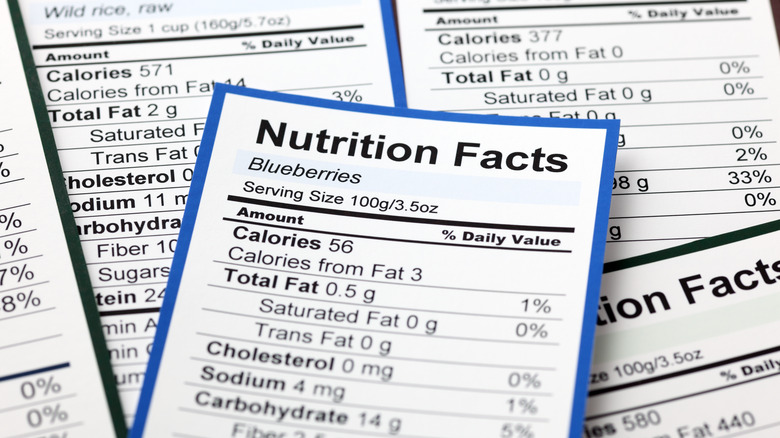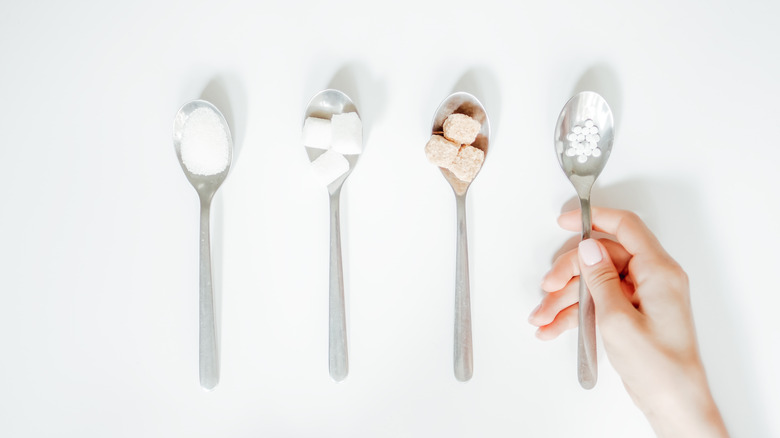What Food Labels Might Be Hiding About Sugar Content
For most, the first memory of ever coming across a "bad food" was most likely as a kid, when parents drilled into us the idea that chocolate, aka sugar, causes cavities and leads to the much-dreaded trip to a dentist's office. As an adult, you realize that unfortunately, there is truth to it.
According to the Harvard School of Public Health, added sugar does nothing good for your daily nutritional intake and may cause a lot of damage. The American Heart Association recommends that sugar should be limited to no more than 6 teaspoons for women and 9 teaspoons for men daily. Consume any more and be prepared for a ton of possible health issues: weight gain, obesity, high blood pressure, increased risk of heart disease, type 2 diabetes, and of course, dental problems (via Healthline).
Despite the negative effects of sugar, research shows that the average American consumes up to 15 teaspoons of sugar a day, which is well over the AHA's daily recommendation (via Healthline). Regardless of how much you try to consciously cut sugar out of your diet, chances are, you're still consuming well over the daily recommended intake. The culprit? The sugar hidden in seemingly healthy processed foods.
Sugar can be disguised under 62 different names
Broadly, sugar falls under four categories: natural sugars found in fruits, vegetables, and dairy; refined sugars like sugarcane; added sugars like syrups and glucose; and hidden sugars disguised under all kinds of non-sugar sounding names. Per To Taste, the last category is the biggest culprit for your increased intake with as many as 62 names that sugar can be disguised under.
While soda is already notorious for containing dangerously high levels of sugar, there are tons of other everyday food items that may be hiding the sugar content. Although all food manufacturers are required to list the percentage of all ingredients on the nutrition facts list in descending order (the highest amount of an ingredient used goes on the very top), manufacturers often use multiple kinds of sugar, all under different names, per Harvard School of Public Health. To not have sugar listed near the top of the ingredient list, it is added in multiple different forms and in smaller percentages so that each source sits somewhere in the middle. This makes it hard for buyers to understand just how much sugar is present in total in the food item.
To Taste recommends being on the lookout for juices, concentrates, syrups, and any word that ends with "-ose." This includes high fructose corn syrup, glucose, barley malt, treacle, and about 60 other words — all of which are equally harmful — hidden in your cereals, cereal bars, yogurt, condiments, and other processed foods.

